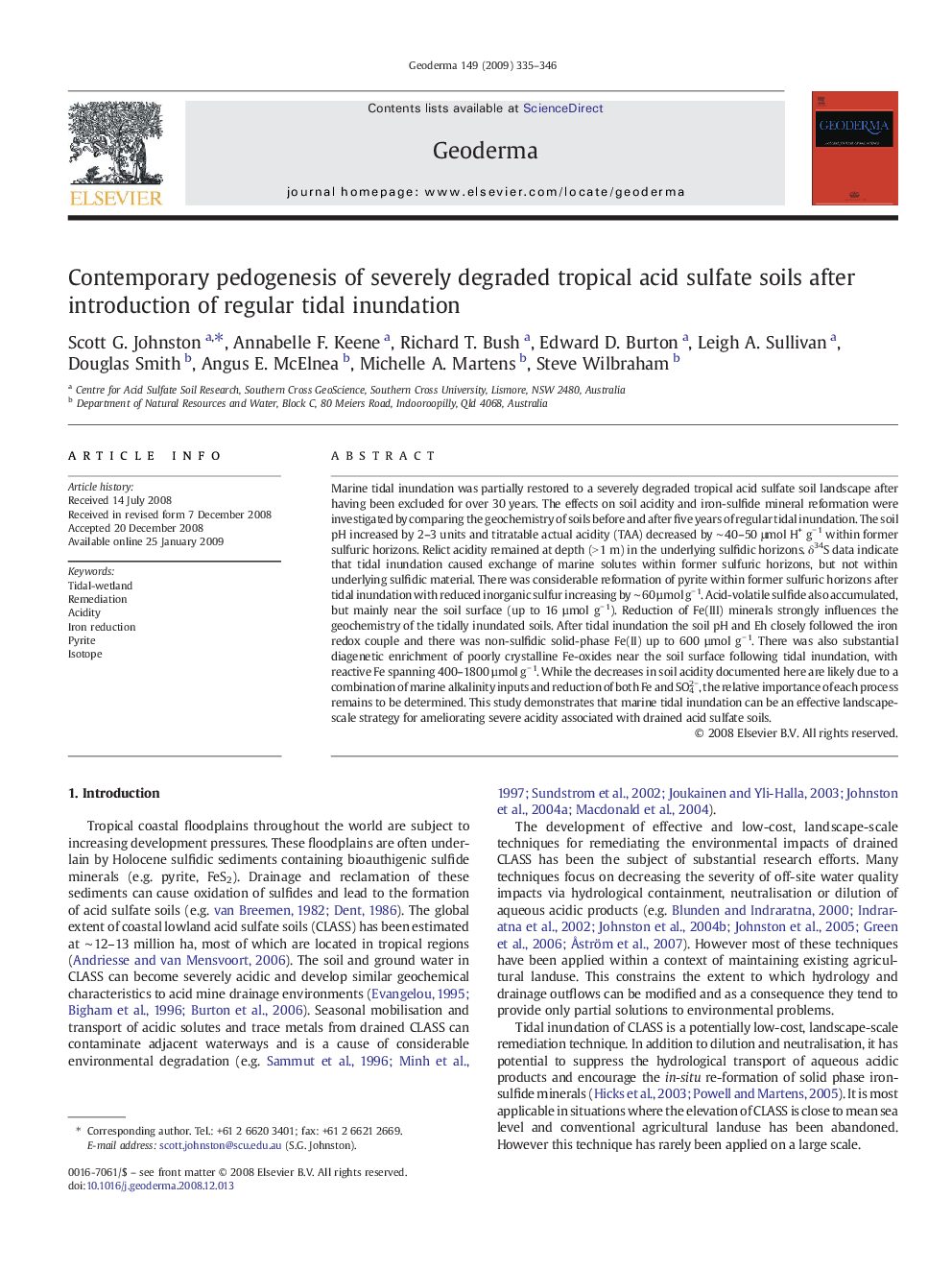| Article ID | Journal | Published Year | Pages | File Type |
|---|---|---|---|---|
| 4574589 | Geoderma | 2009 | 12 Pages |
Marine tidal inundation was partially restored to a severely degraded tropical acid sulfate soil landscape after having been excluded for over 30 years. The effects on soil acidity and iron-sulfide mineral reformation were investigated by comparing the geochemistry of soils before and after five years of regular tidal inundation. The soil pH increased by 2–3 units and titratable actual acidity (TAA) decreased by ∼ 40–50 μmol H+ g− 1 within former sulfuric horizons. Relict acidity remained at depth (> 1 m) in the underlying sulfidic horizons. δ34S data indicate that tidal inundation caused exchange of marine solutes within former sulfuric horizons, but not within underlying sulfidic material. There was considerable reformation of pyrite within former sulfuric horizons after tidal inundation with reduced inorganic sulfur increasing by ∼ 60 µmol g− 1. Acid-volatile sulfide also accumulated, but mainly near the soil surface (up to 16 µmol g− 1). Reduction of Fe(III) minerals strongly influences the geochemistry of the tidally inundated soils. After tidal inundation the soil pH and Eh closely followed the iron redox couple and there was non-sulfidic solid-phase Fe(II) up to 600 µmol g− 1. There was also substantial diagenetic enrichment of poorly crystalline Fe-oxides near the soil surface following tidal inundation, with reactive Fe spanning 400–1800 µmol g− 1. While the decreases in soil acidity documented here are likely due to a combination of marine alkalinity inputs and reduction of both Fe and SO42−, the relative importance of each process remains to be determined. This study demonstrates that marine tidal inundation can be an effective landscape-scale strategy for ameliorating severe acidity associated with drained acid sulfate soils.
